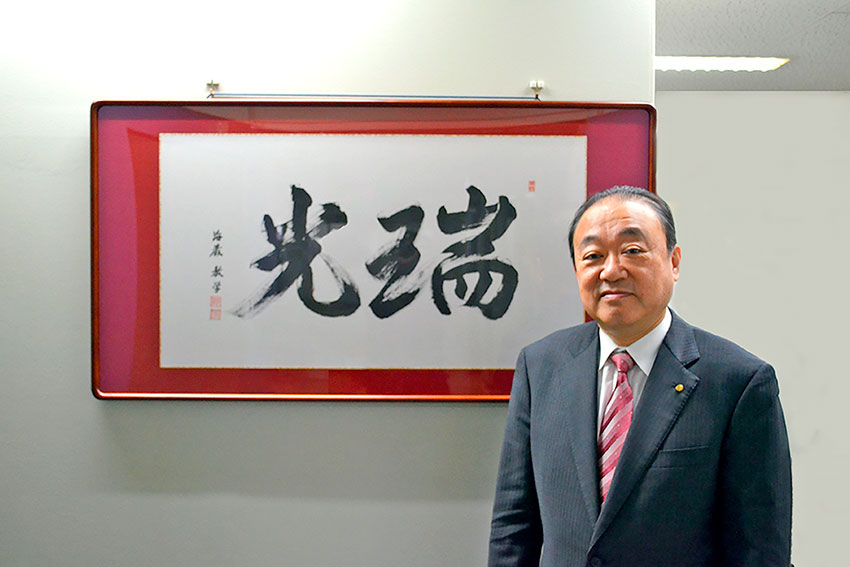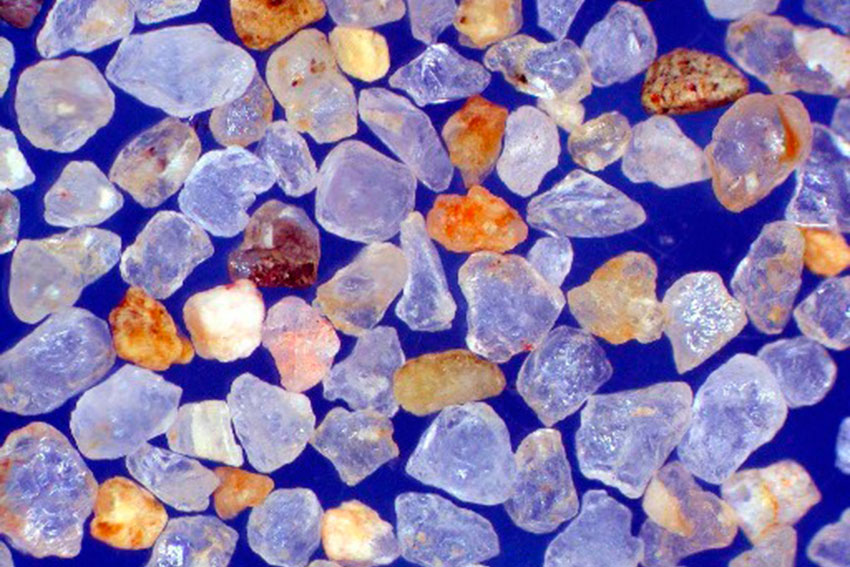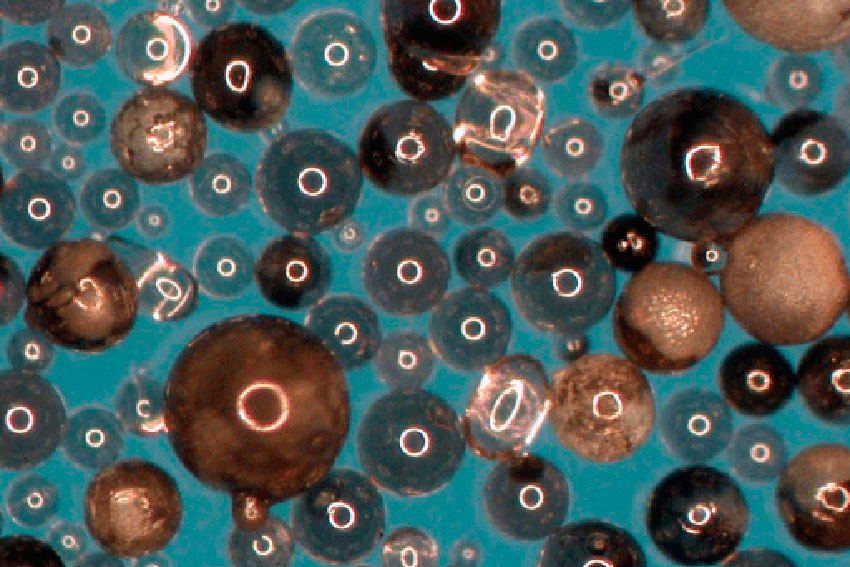As a sand specialist, Yamakawa Sangyo provides products such as coating drying equipment to artificial sand, such as the unique ESPEARL, which is utilised in engines for automotives

What you believe to be this company's core strengths or competencies that set it apart, and make you competitive compared to your regional manufacturing rivals?
I think that in the past, a lot of Japanese companies used to produce final products. However, a lot of companies have shifted their focus to the manufacturing of the materials, or raw materials, where they are making best use of their accumulated knowledge and technologies.
Looking into the automotive sector, Toyota is still a top company globally, and I would say that the subcontractors of Toyota - which have been trained and have accumulated knowledge and technologies under the umbrella of Toyota - are now being used widely across the whole industry.
These are material makers, especially, and thinking about how they have been trained under this structure, I think that they are now very good at thinking about what users want, or what would be the benefit to users, and they are also good at providing after service and follow-ups to the users.
They have worked side by side with their customers and users, and that's why their materials are superior to their regional competitors. That quality has been recognized widely by other countries.
Regarding finished products, they are pretty much affected by social trends, so there are a lot of ups and downs, but in terms of the materials, they are normally used for longer periods of time, so I think in that sense, Japan has got a competitive edge.
They are pretty much influenced by people’s preference or social trends, so it's very hard to accommodate, or incorporate, these changes in the finished product. On the other hand, the materials are not very diversified, they have not changed a lot, so I think that matches the corporate culture in Japan. This is my challenge.

Silica Sand FUSEN 5
Your firm has been involved in recycling activities for sand products since the 1970s, longer than any other sand related company in Japan, if we're not mistaken. I was hoping you could walk us through your your recycling scheme, and where you see areas that can still be improved to make this material as sustainable as possible?
Speaking about recycling, as you know, Japan doesn't have a lot of natural resources compared to other countries, so we have tried to make the best use of what we have. Japanese people tend to take very good care of their materials and resources. That kind of spirit has been accumulated since the Edo period.
Speaking about sand, this has been used in the casting industry for a long time, and among different kinds of sand, silica sand has been used a lot in this industry. Silica sand has a lot of merits, but it also has a lot of demerits, and we have worked very hard to overcome these demerits for a long time.
The largest drawback of silica sand is the thermal expansion. Ever since I joined this company, we have tried to overcome or improve this drawback, and we also looked into the other kinds of sand as well. We are blessed with the mountain where we take the raw materials and sand from. It is different from the sand that is used by firms from Australia. The feature for this sand is that it has less SiO2.
From a recycling perspective, it would be better if the sand contained more silica sand, because it's going to be harder. Looking into the other kinds of sand for recycling, Espearl is the best in terms of its high yield, and there’s also less loss from recycling.
What role can artificial sand play in supplementing the amount of available material, and could you tell us a little bit more about the development history of the Espearl product? What are some of the main applications that it’s being used for by your clients?
A lot of things happened before we reached the point of developing Espearl. At first, we developed NE Sand made from Ferro nickel slag. It was able to eliminate the thermal expansion, but since it was not round, it was unable to meet some of the high-SPEC requirements. Then, we reached the point of developing Espearl in China.
I think you are very familiar with the features of this sand. You researched very well, but the features include that it is in a bowl shape, it is round, it is hard, and it is highly fire-resistant, so it is often used in environments where the temperature is quite high.
However, in 2007, we proposed a new application, to use it in aluminum engine cylinders in cars, and that proposal was accepted by a Japanese car maker, and we built a new factory for RCS (Resin Coated Sand) located in Shiga Prefecture. Products of Espearl-R which are processed at that factory are sold to the casting factory. Then, we collect the used sand, reprocess it again as Espearl-R, and sell it repeatedly.
For aluminum, the temperature for casting is around 760 degrees Celsius, which is relatively low for the casting industry. The problem here is that the resin doesn't get burned completely, so it's very hard to take out the sand after the casting, so you need another process step to bake it again to get the sand out of it.
However, if you use Espearl, you don't need a lot of resin for the coating because that problem doesn't exist anymore, so it's going to be easier to take out the sand. Some of the car makers produce all of the engines using Espearl.

Alumina Type Spherical Artificial Sand ESPEARL
We read that in May of last year you released some equipment – the MADM - which is portable water-based coating dryer equipment. Could you tell us a little more about this product, and what advantage your business, or your history as a material provider, brings to your equipment development process?
Basically, we are targeting a niche field. We are not trying to become a top maker, but we would like to be superior in that niche field, so for this particular product, we are targeting relatively small sized factories. You are able to install this wherever you want because it saves space. That is the feature of this product.
We are targeting what larger companies don't want to do, and where the volume of orders is small and may be difficult to fulfill. I think that's why we have been competitive in this kind of field.
Is this something that came internally from within this company, or was this a request from a customer that you accommodated? Now that it's been nearly one year since it was released, how has it been received by your customers?
Our stance has been to work side by side with our customers and listen to their problems. In the course of our activity, this product has been developed but as a sand maker, we are not trying to make a profit out of the equipment that we produce, but to cater to relatively small-scale companies or subcontractors, so that we can solve their problems with their labor force or space, or costs.
This is a kind of package where the existing components are already assembled, so this is not a pure development or a new creation like Espearl, but this has evolved from our after service. This is not borne of the technology, but by an idea.
In the course of sales activities, our service engineers visited the customer and listened to their problems. For a long time, we've provided this kind of solution to the customers based on the customer's needs, but this time we decided to make this kind of solution and decided to announce it publicly.
Other than this one, we have provided this kind of packaged equipment solution to the customers, which is not in our catalog, but is nevertheless something we have been doing for a long time, so this is not a pure development, it is just a proposal to the customer as a part of the service.
For casting, you need a coating agent to be applied to the cast, and it is conventionally an alcohol-based agent. However, due to environmental concerns, this agent has recently been switched to a water-based agent.
For the small-scale businesses, it's going to require a lot of investment to change the dryer itself, so we wanted to solve this problem so that they could install and switch this kind of dryer easily. We have a lot of relationships with SMEs compared to larger companies, and we want to work side by side with these companies.
You mentioned working together with a Chinese firm helped improve the sand quality of Espearl and brought the product to market. What role does collaboration play in your business? Are you looking for new opportunities to collaborate with overseas companies?
Regarding our relationships with the foreign companies, traditionally, we had relationships with foreign companies to procure materials from them. The starting point was that we just wanted cheaper materials, not for new development.
The biggest challenge when we enter new markets overseas is the shortage of human resources. We don't have a lot of talent who are able to deal with negotiations or transactions overseas, so it's a bottleneck when we think about overseas expansion.
For further expansion in the overseas market, we need to solve the problem about talent and human resources. If we use more human resources in the domestic field, then we will have a shortage here, so that challenge needs to be overcome.
What are you doing to overcome this challenge?
Firstly, I would like to improve the image of this company so that we can attract more talent here. The other thing we are focusing on is the education of our existing human resources, to make them more of a global talent.
Can you tell us a little more about your vision for the global development of your business? Would it be through trying a different joint venture in a different market, for example?
I think that going forward, we need to collaborate with local companies that have a deeper knowledge of the local business practices, laws and regulations. We actually used a consultant to go to that market, but it still didn't work.
Let's say we come back to interview you again in 10 years' time for your company’s 100th anniversary. What would you like to tell us about your goals and dreams for the company in that timeframe, and what would you like to have achieved by then?
This is something I've always said to my employees. My dream is to make our employees happy, and I am not a part of the founder’s family, but I was an employee and now I am president.
In the course of that process, there were a lot of milestones where I felt that improvement was needed, so I would like to continue these improvements. As you may know, Japanese salaries haven't increased for a long time, and commodity prices didn't increase a lot, but now we see a rise in commodity prices, so we would like to take some actions to address this situation.
I always make a commitment to my employees that I would like to have them feel that they are happy to be a part of this company. This is not just a dream for the 100th anniversary, but I would like to make this company sustainable for another 100 years until the 200th anniversary.
0 COMMENTS